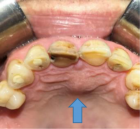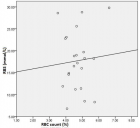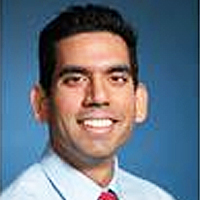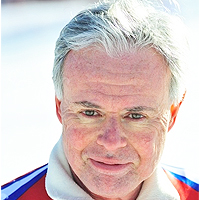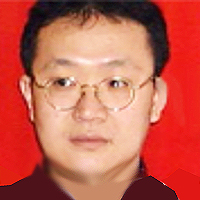Abstract
Review Article
Neuroscience, Rehabilitation and New Technologies: Perspectives and critical points for a synergistic development
Alessandro Giustini*
Published: 28 November, 2018 | Volume 2 - Issue 2 | Pages: 052-059
The growth of Rehabilitation, in all of its field and mainly in neuro-rehabilitation applications and settings, is showing increasingly strong interaction with the growth of technology and its innovative applications.
Nevertheless, is should be stressed that the use of machinery has always been a fundamental mainstay of Rehabilitation practices facing the whole person’s aspects and involving the whole physical world around the disabled people as it is: as it was in the past with physical exercises, physical modalities, and in many other trainings and activities that employed physical and technological means as Aids, Prostheses and Orthotics.
Read Full Article HTML DOI: 10.29328/journal.jnnd.1001015 Cite this Article Read Full Article PDF
References
- Delarque A, Franchignoni F, Giustini A, Lankhorst G. European Physical and Rehabilitation Medicine: 3 years after White Book. J Rehabil Med. 2010; 42: 1-3. Ref.: https://goo.gl/zyzGnv
- Giustini A. “Certainties and prospects in PRM”. EuraMedicoPhys. 2005; 41: 215-219.
- Giustini A. From acute intervention to domiciliary and social integration: research to build Community-Based Rehabilitation (CBR) on effectiveness”. International Journal of Rehabilitation Research. 2004; 27 suppl 1: 44-45.
- Sandrini G, Binder H, Hömberg V, Saltuari L, Tarkka I, et al. European core curriculum in neurorehabilitation. Funct Neurol 2017; 32: 63-68. Ref.: https://goo.gl/ZvaFMM
- Giustini A, Varela E, Franceschini M, Votava J, Zampolini M, et al. UEMS –Position Paper. New Technologies designed to improve Functioning. Eur J Phys Rehabil Med. 2014; 50: 579-583. Ref.: https://goo.gl/ZVTkqP
- Lo AC, Guarino PD, Richards LG, Haselkorn JK, Wittemberg GF, et al. Robot-assisted therapy for long-term upper limb impairment after stroke. N Engl J Med. 2010; 362: 1772-1783. Ref.: https://goo.gl/YpY4RS
- Holden MK. Virtual environments for motor rehabilitation: review. 26. Cyberpsychol behave. 2005; 8: 187–211. Ref.: https://goo.gl/AnHicA
- Huijgen BC, Vollenbroek-Hutten MM, Zampolini M, Opisso E, Bernabeu M, et al. Feasibility of home-based telerehabilitation system compared to usual care: arm/hand function in patients with stroke, traumatic brain injury and multiple sclerosis. J Telemed Telecare. 2008; 14: 5 -20. Ref.: https://goo.gl/cdoK4C
- Man DW, Soong WY, Tam SF, Hui-Chan CW. A randomized clinical trial study on the effectiveness of a tele-analogy-based problem-solving programme for people with acquired brain injury (ABI). NeuroRehabilitation. 2006; 21: 205–217. Ref.: https://goo.gl/1caGaM
- Mehrholz J, Thomas S, Werner C, Kugler J, Pohl M. et al. Electromechanical-assisted training for walking after stroke. Cochrane Database of Syst Rev. 2007: CD006185. Ref.: https://goo.gl/v7Bhw1
- Mehrholz J, Platz T, Kugler J, Pohl M, et al. Electromechanical and robot-assisted arm training for improving arm function and activities of daily living after stroke. Cochrane Database of Syst Rev. 2008; CD006876. Ref.: https://goo.gl/XWNwVL
- Piron L, Tonin P, Piccione F, Iaia V, Trivello E, et al. Virtual 17. Environment training therapy for arm motor rehabilitation. Presence 2005; 6: 732–740. Ref.: https://goo.gl/5YTgt9
- Reinkensmeyer DJ, Pang CT, Nessler JA, Painter CC. Web-based telerehabilitation for the upper extremity after stroke. IEEE Trans Neural Syst Rehabil Eng. 2002; 10: 102–108. Ref.: https://goo.gl/ZLsBjs
- Sale P, Franceschini M, Waldner A, Hesse S. Use of the Robot Assisted Gait Therapy in rehabilitation of patients with stroke and spinal cord injury. Eur J Phys Rehabil Med. 2012; 48: 111-121. Ref.: https://goo.gl/jfV3W4
- Stucki G, Grimby G. Applying the ICF in Medicine. J Rehabil Med. 2004; (44 Suppl): 5-6. Ref.: https://goo.gl/5uFLiS
- United Nations. Convention on the rights of persons with disabilities (resolution 61/106). New York, NY: United Nations; 2007. Ref.: https://goo.gl/NW88wr
- Ustun B, Chatterji S, Kostanjsek N. Comments from WHO for the Journal of Rehabilitation Medicine Special Supplement on ICF Core Sets. Journal of Rehabilitation Medicine. 2004; (44 Suppl): 7-8. Ref.: https://goo.gl/euTkEW
- Von Groote PM, Giustini A, Bickenbach JE. Analysis and Implementation of a WHO Health Report. Methodological Concepts and Strategies. Am J Phys Med Rehabil. 2014; 93 (1 Suppl 1): S12-26. Ref.: https://goo.gl/eWx9fP
- Wade DT. Community rehabilitation, or rehabilitation in the community? Disabil Rehabil. 2003; 25: 875-881. Ref.: https://goo.gl/HKyKtw
- World Health Organization. World Report on Disability. Geneva: World Health Organization; 2011. Ref.: https://goo.gl/GbDhoSA
Similar Articles
-
Analysis of early Versus Delayed Carotid Surgery after Acute Ischemic StrokePEROU Sébastien*,DETANTE Olivier,SPEAR Rafaelle,PIRVU Augustin,ELIE Amandine,MAGNE Jean-Luc. Analysis of early Versus Delayed Carotid Surgery after Acute Ischemic Stroke. . 2017 doi: 10.29328/journal.jnnd.1001001; 1: 001-011
-
The “Calcium Paradox” Due To Ca2+/Camp Interaction: New Insights for the Neuroscience FieldLeandro Bueno Bergantin*, Afonso Caricati-Neto. The “Calcium Paradox” Due To Ca2+/Camp Interaction: New Insights for the Neuroscience Field. . 2017 doi: 10.29328/journal.jnnd.1001002; 1: 012-015
-
Protective functions of AEURA in Cell Based Model of Stroke and Alzheimer diseaseJigar Modi,Ahmed Altamimi,Ashleigh Morrell,Hongyuan Chou,Janet Menzie,Andrew Weiss,Michael L Marshall, Andrew Li,Howard Prentice*,Jang-Yen Wu*. Protective functions of AEURA in Cell Based Model of Stroke and Alzheimer disease. . 2017 doi: 10.29328/journal.jnnd.1001003; 1: 016-023
-
Direct Carotid Puncture for Flow Diverter Stent InsertionBhogal P*,Phillips TJ, Makalanda HLD. Direct Carotid Puncture for Flow Diverter Stent Insertion. . 2017 doi: 10.29328/journal.jnnd.1001004; 1: 024-028
-
Lateralized Cerebral Amyloid Angiopathy presenting with recurrent Lacunar Ischemic StrokeYi Li*, Ayman Al-Salaimeh,Elizabeth DeGrush,Majaz Moonis*. Lateralized Cerebral Amyloid Angiopathy presenting with recurrent Lacunar Ischemic Stroke. . 2017 doi: 10.29328/journal.jnnd.1001005; 1: 029-032
-
Experimental ‘hindbrain related’ syringomyelia: some mechanisms of spinal cord damageSergey N Larionov*,Sorokovikov VA,Rudakova AV. Experimental ‘hindbrain related’ syringomyelia: some mechanisms of spinal cord damage. . 2017 doi: 10.29328/journal.jnnd.1001006; 1: 033-038
-
Focal Ab-amyloid deposition precedes cerebral microbleeds and Superficial siderosis: a case reportParnesh Raniga,Patricia Desmond, Paul Yates,Olivier Salvado, Pierrick Bourgeat,Jurgen Fripp,Svetlana Pejoska, Michael Woodward,Colin L Masters,Christopher C Rowe,Victor L Villemagne*. Focal Ab-amyloid deposition precedes cerebral microbleeds and Superficial siderosis: a case report. . 2017 doi: 10.29328/journal.jnnd.1001007; 1: 039-044
-
Comorbidity of alcohol dependence with attention-deficit/hyperactivity disorder and the role of executive dysfunctionsCaterina Pistarini*,Gloria Tosi,Giovanni Vittadini,Ines Giorgi,Elena Fiabane,Paola Palladino. Comorbidity of alcohol dependence with attention-deficit/hyperactivity disorder and the role of executive dysfunctions . . 2018 doi: 10.29328/journal.jnnd.1001008; 2: 001-010
-
Spinal muscular atrophy counteracted by Agrin biological NT-1654Jes Paul*. Spinal muscular atrophy counteracted by Agrin biological NT-1654. . 2018 doi: 10.29328/journal.jnnd.1001009; 2: 011-013
-
Brain and immune system: KURU disease a toxicological process?Luisetto M*,Behzad Nili-Ahmadabadi,Ghulam Rasool Mashori,Ahmed Yesvi,Ram Kumar Sahu,Heba Nasser,Cabianca luca,Farhan Ahmad Khan. Brain and immune system: KURU disease a toxicological process?. . 2018 doi: 10.29328/journal.jnnd.1001010; 2: 014-027
Recently Viewed
-
Effect of sperm DNA fragmentation on ICSI outcome: A prospective studySaravanan Lakshamanan,Saravanan Mahalakshmi,Harish Ramya,Sharma Nidhi*. Effect of sperm DNA fragmentation on ICSI outcome: A prospective study. Clin J Obstet Gynecol. 2020: doi: 10.29328/journal.cjog.1001065; 3: 127-131
-
A study of coagulation profile in patients with cancer in a tertiary care hospitalGaurav Khichariya,Manjula K*,Subhashish Das,Kalyani R. A study of coagulation profile in patients with cancer in a tertiary care hospital. J Hematol Clin Res. 2021: doi: 10.29328/journal.jhcr.1001015; 5: 001-003
-
Viral meningitis in pregnancy: A case reportRuth Roseingrave*,Savita Lalchandani . Viral meningitis in pregnancy: A case report. Clin J Obstet Gynecol. 2020: doi: 10.29328/journal.cjog.1001063; 3: 121-122
-
Vaginal and endometrial metastasis of primary cutaneous malignant melanomaMaria Boia Martins*,Francisca Morgado,Nuno Oliveira,Filomena Ramos. Vaginal and endometrial metastasis of primary cutaneous malignant melanoma. Clin J Obstet Gynecol. 2020: doi: 10.29328/journal.cjog.1001062; 3: 120-120
-
Universal testing for severe acute respiratory syndrome coronavirus 2 upon admission to three labor and delivery units in Santa Clara County, CASophia Yang,Rishi Bhatnagar,James Byrne,Andrea Jelks*. Universal testing for severe acute respiratory syndrome coronavirus 2 upon admission to three labor and delivery units in Santa Clara County, CA. Clin J Obstet Gynecol. 2020: doi: 10.29328/journal.cjog.1001060; 3: 109-113
Most Viewed
-
Evaluation of Biostimulants Based on Recovered Protein Hydrolysates from Animal By-products as Plant Growth EnhancersH Pérez-Aguilar*, M Lacruz-Asaro, F Arán-Ais. Evaluation of Biostimulants Based on Recovered Protein Hydrolysates from Animal By-products as Plant Growth Enhancers. J Plant Sci Phytopathol. 2023 doi: 10.29328/journal.jpsp.1001104; 7: 042-047
-
Sinonasal Myxoma Extending into the Orbit in a 4-Year Old: A Case PresentationJulian A Purrinos*, Ramzi Younis. Sinonasal Myxoma Extending into the Orbit in a 4-Year Old: A Case Presentation. Arch Case Rep. 2024 doi: 10.29328/journal.acr.1001099; 8: 075-077
-
Feasibility study of magnetic sensing for detecting single-neuron action potentialsDenis Tonini,Kai Wu,Renata Saha,Jian-Ping Wang*. Feasibility study of magnetic sensing for detecting single-neuron action potentials. Ann Biomed Sci Eng. 2022 doi: 10.29328/journal.abse.1001018; 6: 019-029
-
Pediatric Dysgerminoma: Unveiling a Rare Ovarian TumorFaten Limaiem*, Khalil Saffar, Ahmed Halouani. Pediatric Dysgerminoma: Unveiling a Rare Ovarian Tumor. Arch Case Rep. 2024 doi: 10.29328/journal.acr.1001087; 8: 010-013
-
Physical activity can change the physiological and psychological circumstances during COVID-19 pandemic: A narrative reviewKhashayar Maroufi*. Physical activity can change the physiological and psychological circumstances during COVID-19 pandemic: A narrative review. J Sports Med Ther. 2021 doi: 10.29328/journal.jsmt.1001051; 6: 001-007

HSPI: We're glad you're here. Please click "create a new Query" if you are a new visitor to our website and need further information from us.
If you are already a member of our network and need to keep track of any developments regarding a question you have already submitted, click "take me to my Query."






